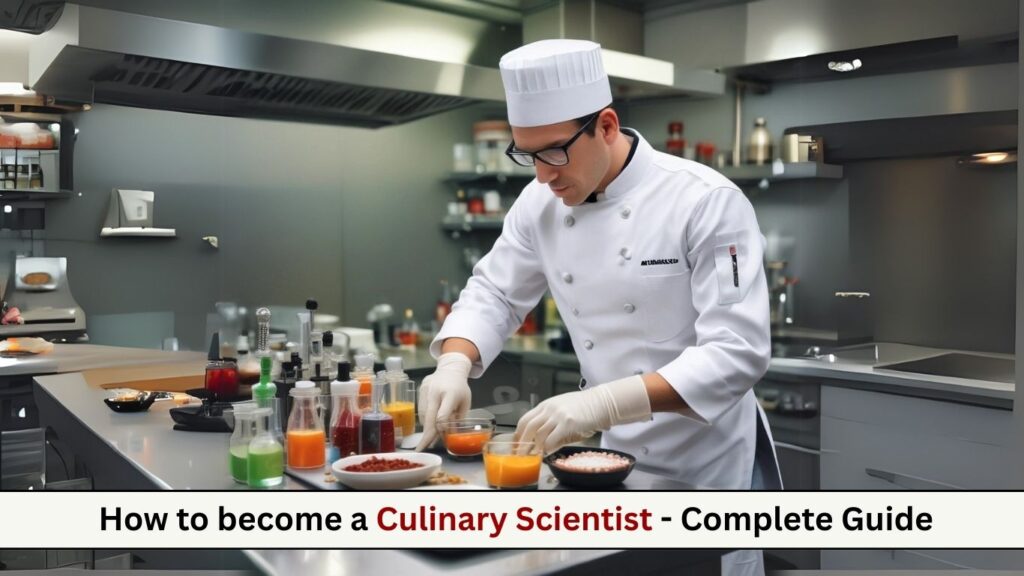
Introduction to Culinary Science
Culinary scientists stand at the intersection of food and science, transforming how we create, process, and experience food. As the food industry evolves with technological advancements, these professionals are becoming increasingly vital to food manufacturers, research institutions, and innovative startups.
This comprehensive guide covers:
- Historical development of culinary science
- Core responsibilities in the field
- Global salary benchmarks
- Essential qualifications and skills
- Step-by-step career path
- Future trends in food innovation
History of Culinary Science
The discipline has evolved from ancient food preservation to modern molecular gastronomy:
Key Historical Milestones
- Ancient Times: Early fermentation and preservation techniques
- 1700s: Scientific cooking principles emerge
- 1860s: Louis Pasteur’s food pasteurization
- 1940s: Development of processed foods for WWII
- 1980s: Molecular gastronomy movement begins
- 2000s: Food science becomes academic discipline
- 2020s: AI and biotechnology revolutionize food development
Roles and Responsibilities
Culinary scientists bridge kitchen and laboratory with diverse roles:
Primary Responsibilities
- Product Development
- Create innovative food products
- Reformulate existing products
- Test new ingredients
- Food Analysis
- Conduct nutritional testing
- Analyze shelf life
- Perform sensory evaluations
- Process Optimization
- Improve manufacturing techniques
- Enhance food safety protocols
- Reduce production costs
- Research & Innovation
- Explore alternative proteins
- Develop sustainable packaging
- Study food behavior
Work Environments
- Food manufacturing companies
- Research and development labs
- Academic institutions
- Government agencies (FDA, USDA)
- Culinary technology startups
Salary and Career Outlook
Compensation varies by education and industry sector:
2024 Salary Benchmarks
| Country | Entry-Level | Mid-Career | Senior-Level |
|---|---|---|---|
| USA | $55,000 | $80,000 | $120,000+ |
| UK | £30,000 | £45,000 | £70,000+ |
| Canada | CAD 60,000 | CAD 85,000 | CAD 110,000+ |
| Australia | AUD 65,000 | AUD 90,000 | AUD 130,000+ |
| India | ₹5-7 lakhs | ₹10-15 lakhs | ₹20-25 lakhs+ |
Job Growth: The field is projected to grow 8-10% annually due to increasing demand for food innovation and safety.
Qualifications and Skills
A strong scientific foundation with culinary expertise is essential:
Educational Pathways
- Bachelor’s Degrees:
- Food Science
- Culinary Science
- Nutrition
- Advanced Degrees:
- MSc in Food Technology
- PhD in Food Chemistry
- Certifications:
- Certified Food Scientist (CFS)
- Research Chefs Association certifications
- HACCP certification
Essential Skills
- Food chemistry knowledge
- Culinary techniques mastery
- Laboratory proficiency
- Data analysis capabilities
- Sensory evaluation expertise
- Project management skills
How to Become a Culinary Scientist
Step 1: Build Educational Foundation
- Pursue relevant undergraduate degree
- Take culinary arts courses
- Complete food science electives
Step 2: Gain Practical Experience
- Intern at food companies
- Work in restaurant kitchens
- Volunteer in food research labs
Step 3: Develop Specializations
- Choose focus area (e.g., alternative proteins)
- Earn advanced certifications
- Build professional network
Step 4: Enter the Workforce
- Apply to food R&D positions
- Consider academic research
- Explore government roles
Step 5: Career Advancement
- Lead product development teams
- Transition to executive roles
- Start food tech ventures
Future of Culinary Science
The field is undergoing exciting transformations:
Emerging Trends
- Alternative Proteins:
- Plant-based meat development
- Cellular agriculture
- Insect protein applications
- Sustainable Solutions:
- Food waste reduction
- Eco-friendly packaging
- Circular food systems
- Technological Integration:
- AI-assisted recipe development
- 3D food printing
- Smart kitchen technologies
Growth Areas
- Personalized nutrition
- Functional foods
- Space food technology
- Flavor innovation
Conclusion
Culinary science offers a rewarding career at the cutting edge of food innovation. Professionals who combine scientific rigor with culinary creativity will lead the future of food.
Start building your expertise today to become part of this dynamic, impactful field shaping how the world eats.













Post Comment